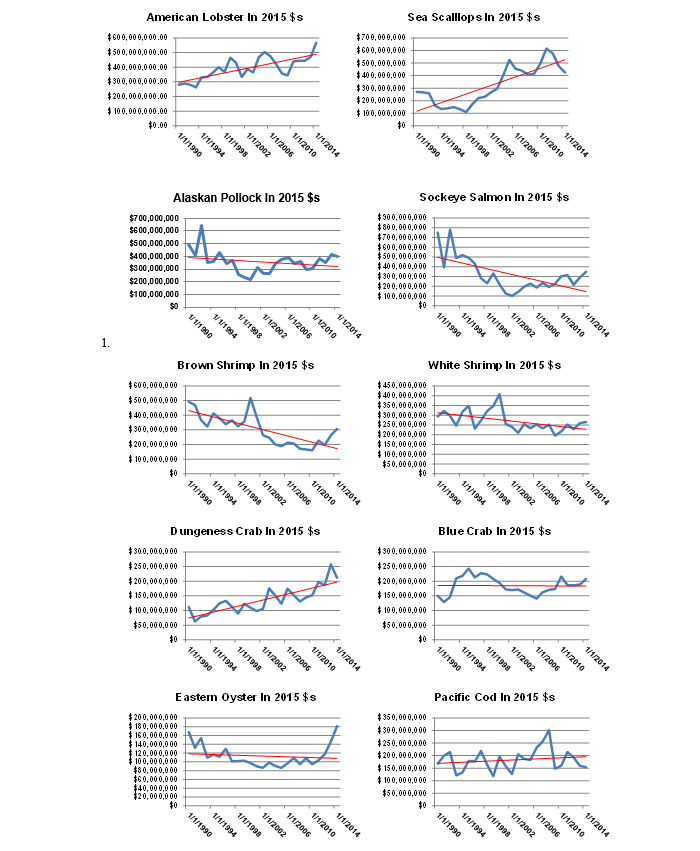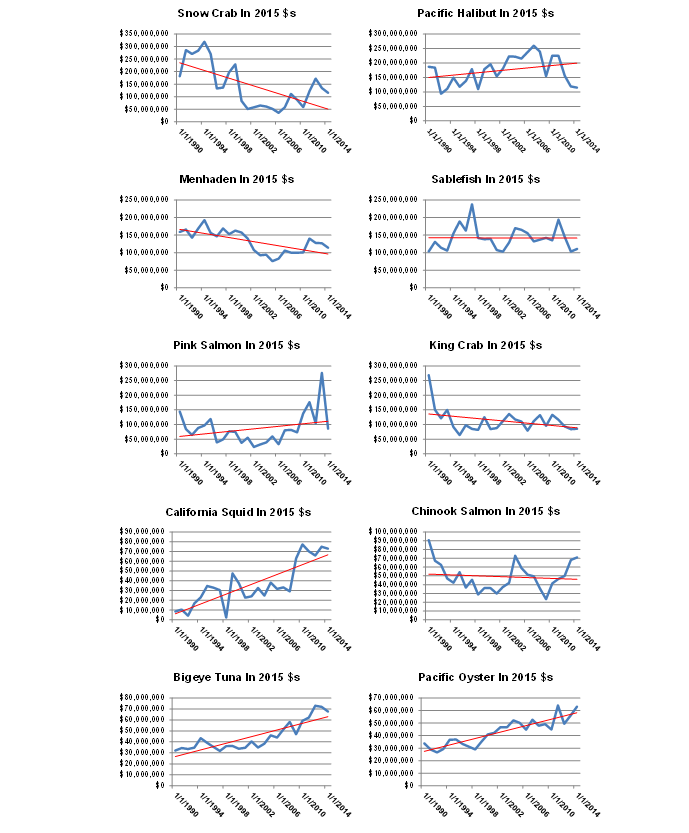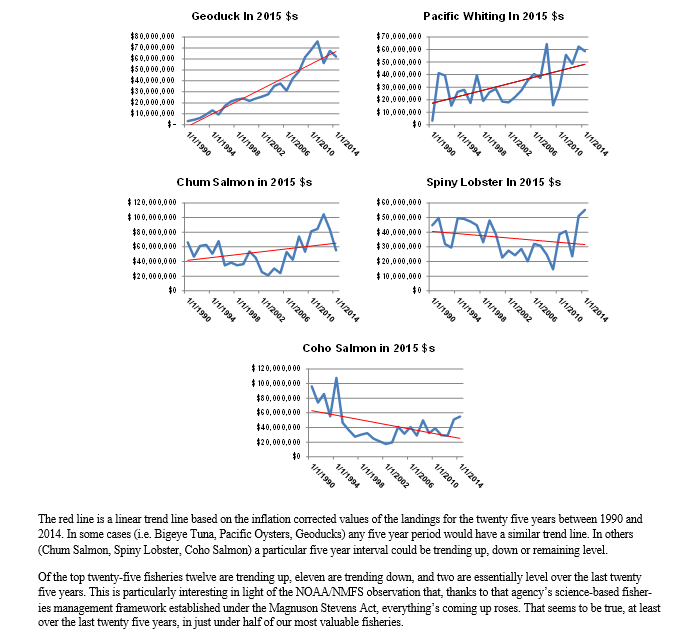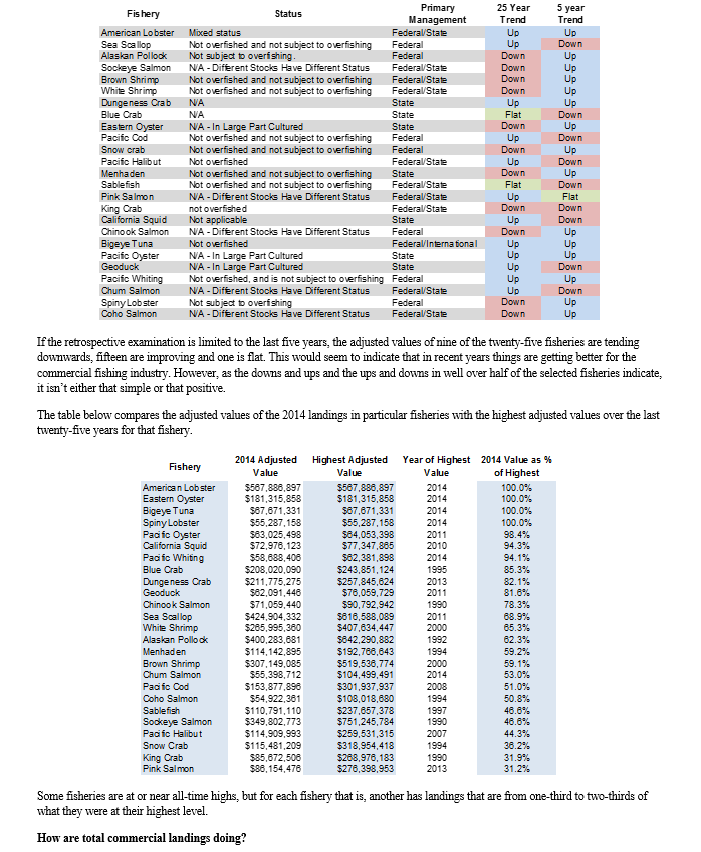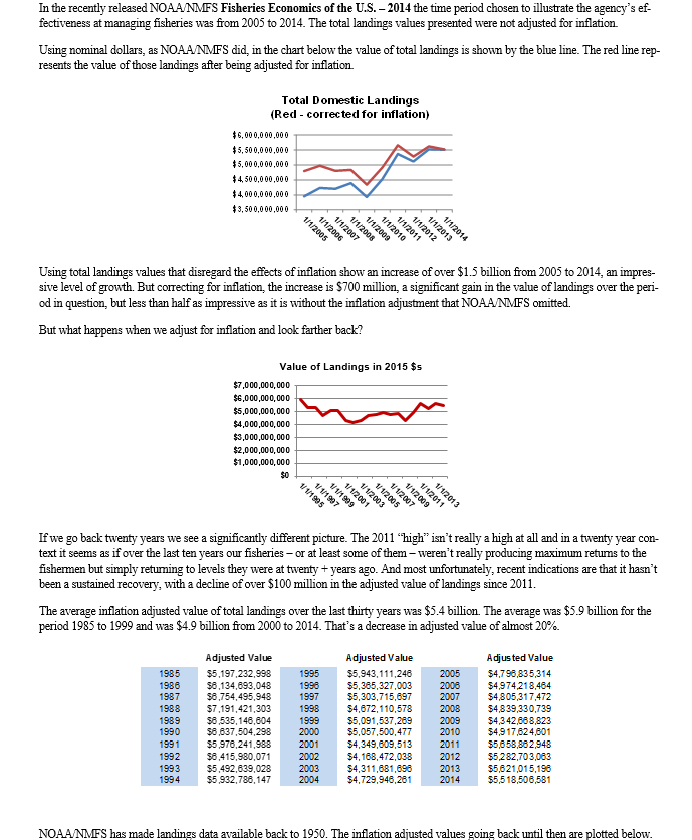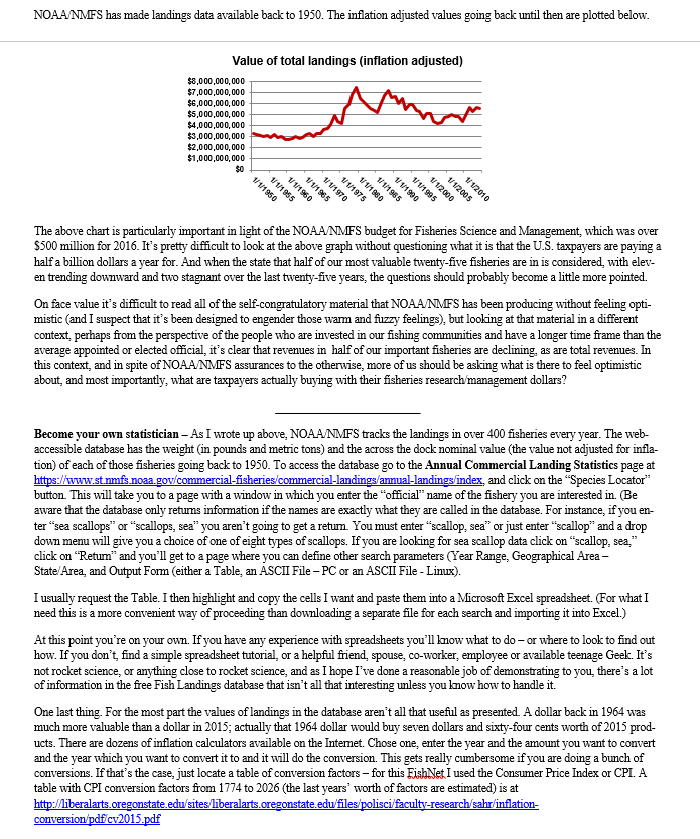Nils Stolpe – Magnuson management – how well is it working?
Nils Stolpe, FishNet USA
“Through investment and sacrifice on the part of our commercial and recreational fishermen, today, landings by U.S. commercial fishermen—and the value they get for those landings—are near all-time highs” The Governance of Fish: Forty Years under the Magnuson-Stevens Act, 04/11/2016, Sam Rauch (Deputy Assistant Administrator for Regulatory Programs, NOAA Fisheries)
Periodically I like to do an overview of U.S. fisheries to give readers the opportunity to evaluate how their fisheries are doing relative to other domestic fisheries. This seems particularly relevant today, particularly considering Sam Rauch’s “happy birthday to us” anniversary statement up above.
Considering that the NOAA/NMFS commercial landings database (http://www.st.nmfs.noaa.gov/st1/commercial/landings/annual_landings.html) lists over 480 fisheries, how to approach this task has always been a challenge. Considering each one would be extremely cumbersome and time consuming and would cover a lot of fisheries that are of interest to only a very small part of the industry. For example, there are 300+ fisheries that had less than $1,000,000 worth of landed value in 2014 and 100+ fisheries with a landed value less than $20,000. This isn’t to imply that these smaller fisheries aren’t important. To the fishermen, other businessmen and consumers who count of them, every fishery is important. But as a practical matter they can’t all be addressed here.
(I have appended a few paragraphs at the end of this FishNet that will walk you through the process for any of the fisheries that NOAA/NMFS monitors).
How are the twenty-five most valuable commercial fisheries doing?
The U.S. commercial fishing fleet landed five and a half billion dollars’ worth of finfish and shellfish in 2014, and about 80% of that – four and a quarter billion dollars’ worth – was landed in the 25 most “valuable” fisheries. In fact, the New England/mid-Atlantic lobster and sea scallop fisheries together landed over a billion dollars’ worth of product.
Thus, to avoid the appearance of “cherry picking” the fisheries to include, I decided that I would look at the top 25 fisheries in terms of landed value. These are divided between finfish and shellfish, are well spread geographically, utilize each of the major gear types, and the vessels that participate range from the smallest to the largest commercially fishing. The 25 fisheries take place in the estuaries and in inshore and offshore waters, and are managed by the states, by the federal government through the regional management councils, by the interjurisdictional Commissions or jointly by the latter two.
I initially choose a twenty-five year time frame – 1990 to 2014 – because it is generally accepted as the length of a human generation and is long enough to even out a lot of the normal highs and lows in annual landings (more on this later). It also avoids the spikes in landings that were associated with what can best be described as post-Magnuson euphoria.
The values reported in the NOAA/NMFS Landings Database are the nominal values (the values of the annual landings in that year’s dollars). Using these values would ignore the effects of inflation, which becomes quite significant over time. As an example, the 40 million pounds of coho salmon landed in 1950 returned only $7 million dollars to the fishermen at the time, yet what that $7 million would buy in 1950 would cost $70 million in 2015. Thus the blue lines represent the value of the landings of the listed species in 2015 dollars, converted using the Consumer Price Index (CPI).







